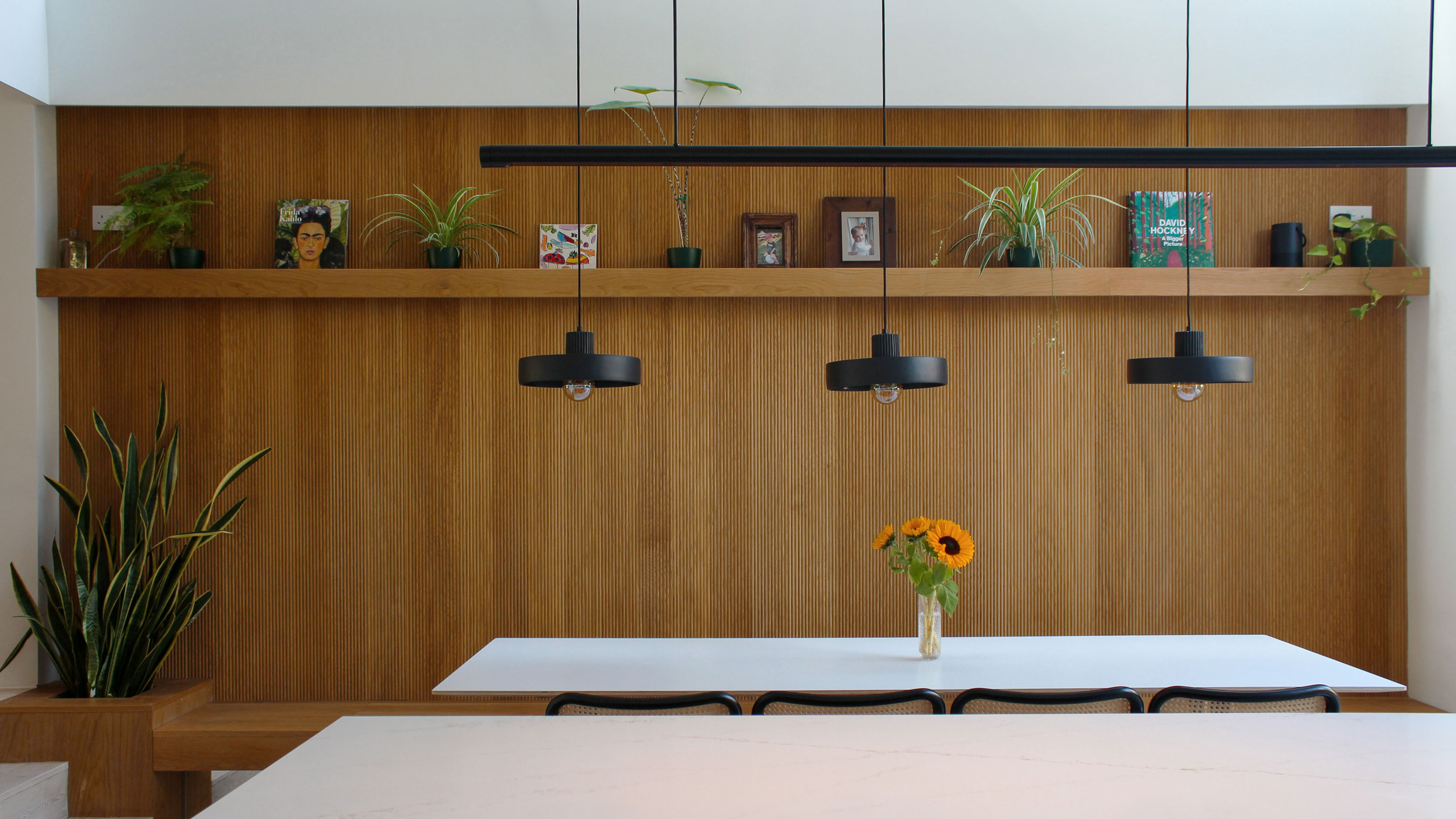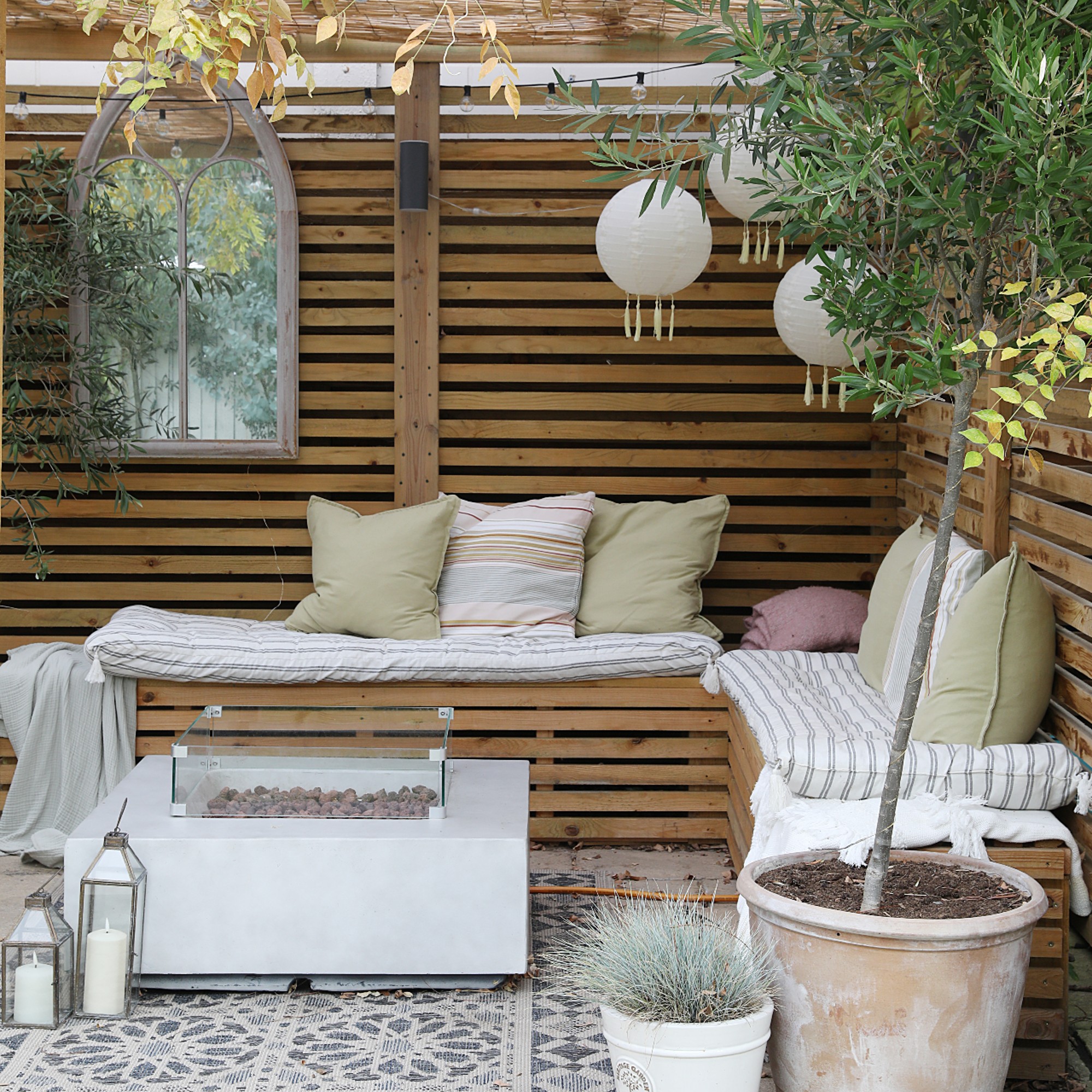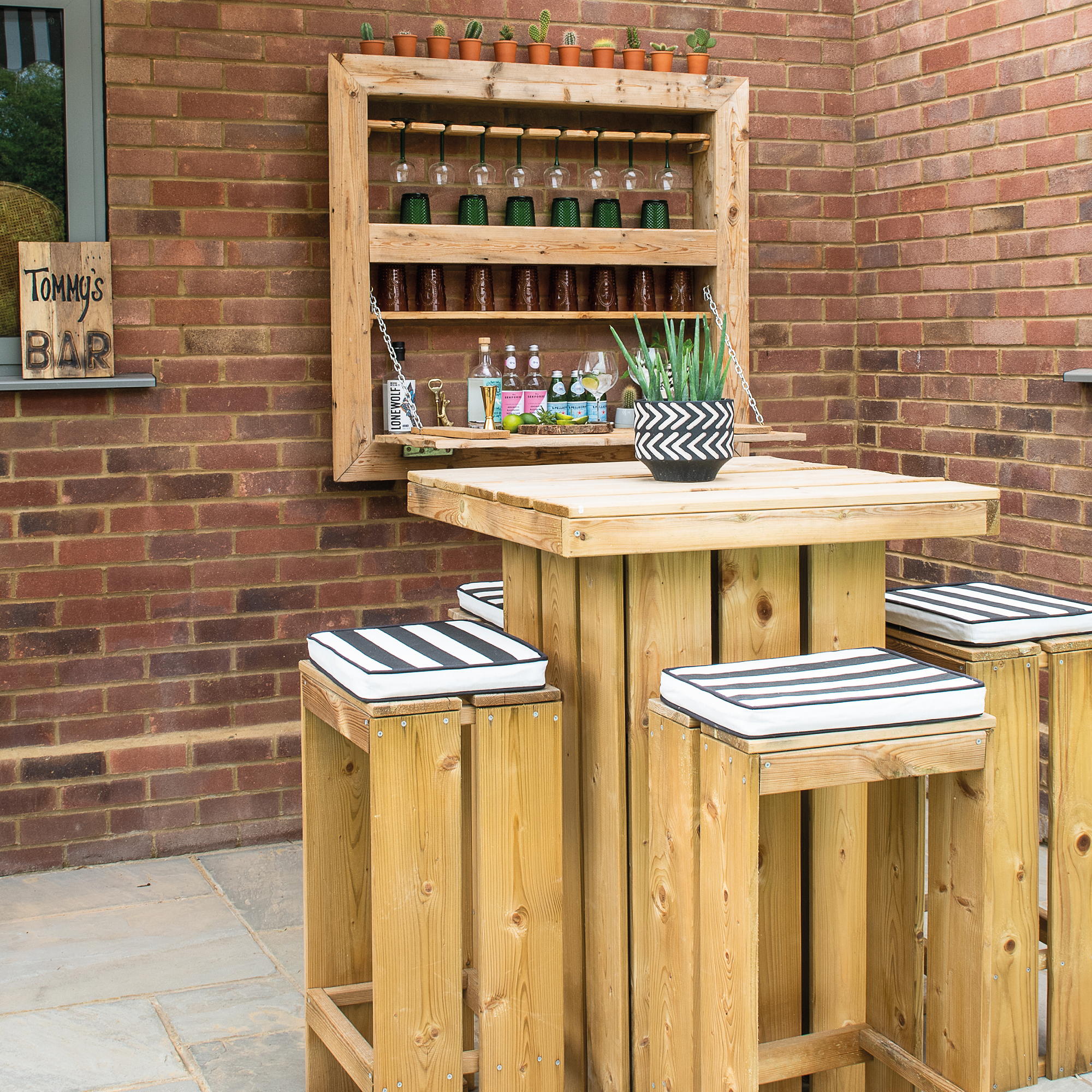How to clean mould off wood – an easy, expert-approved step-by-step to spot, treat and prevent the issue
It’s much easier than you'd think


From the furniture in your bedroom to the cabinets in your kitchen and even the planters in your garden, wood is everywhere - both inside and outside your home. So, knowing how to clean mould off wood can really help you out.
Mould on wood isn’t just unsightly—it can also be a sign of excess moisture in your home, which, left unchecked, can lead to long-term damage.
You should always do everything you can to get rid of mould for the sake of your house and your health, whether you’re looking to refresh your best garden furniture, you’re in the midst of an upcycling project or you're trying to get rid of mould from window sills.
But how do you clean mould off wood? We’ve consulted with the experts and have put together the ultimate guide on how to do this. Plus, we've outlined what tools you’ll need to get the job done.

Why does mould grow on wood?
Mould thrives in damp, poorly ventilated spaces where humidity levels are high, making wood, especially untreated or porous wood, a prime target.
‘Mould appears on wood as it is a natural source of cellulose - this is a food for mould. Wood exposed to moisture or high humidity then creates the perfect conditions for mould to grow,’ explains cleaning expert Nicola Rodriguez, AKA @essexhousedolly. Thankfully, this is easy to clean as long as you follow the step-by-step process below.
Bathrooms, kitchens, and basements are common culprits, but any area with persistent moisture can create the perfect environment for mould to flourish. If it's left unchecked, mould can stain or weaken wooden surfaces, so it’s really important to act quickly.
Get the Ideal Home Newsletter
Sign up to our newsletter for style and decor inspiration, house makeovers, project advice and more.
'It takes just 24-48 hours for mould spores to develop and if the humidity rises above 60 to 65%, you can see signs within 24 hours,' adds Jimmy Englezos, Senior Brand Manager from Ronseal.
'Whilst many look for mould in the more obvious areas in the home affected by condensation such as the bathroom and kitchen, the trickier to clean areas such as wooden skirting boards can go unnoticed.'
Signs that mould has affected wood
We asked Jimmy Englezos, Ronseal's Senior Brand Manager:
- 'Discolouration: Wood affected by mould can become discoloured with patches of green, black or brown on the surfaces which can spread if left untreated.
- Musty odour and damp smell: If affected by mould, the area will have a distinct musty odour and damp smell.
- Fuzzy or slimy texture: The area can have a fuzzy or velvety texture if affected by mould. Fuzzy growth is a strong indicator of mould infestation.'
What you’ll need
- Vacuum cleaner (don’t have one? Check out our best vacuum cleaner guide)
- White vinegar - like this Miniml Eco White Vinegar from Amazon
- Microfibre cloths - like this Sorbo Pack of 4 Microfibre Cloths from Dunelm
- Soft-bristled brush - like this Renapur horsehair brush from Amazon
- Spray bottle
- Washing up liquid
- Sponge
- Rubber gloves
Step-by-step

1. Protect yourself and your home
'The first step when it comes to removing mould from wood is making sure you’re properly protected, as cleaning mould can throw spores into the air that you don’t want to come into contact with,' explains Kenny Macfarlane, Managing Director of Handrail Creations.'You should be wearing gloves, goggles, a face covering, and a jumper or long-sleeved shirt to minimise your exposure.'
Also, if you can, do this cleaning task outside in your garden or in a well-ventilated area. But if you can’t, make sure you cover any surrounding surfaces and furniture with dust sheets or old bedsheets to stop the spread of these mould spores.
In fact, we’d suggest plugging in one of the best air purifiers to catch the mould spores as soon as they’re agitated.
2. Vacuum the mould
It may seem strange to vacuum wood, but this is actually one of the best ways to get off any loose mould spores. Ideally, you should use a vacuum cleaner with a HEPA filter, as this will successfully catch the mould spores and stop them spreading elsewhere.
Steve Chilton, garden expert at LeisureBenchsuggests, ‘Start by lightly vacuuming the surface of the wood to remove any loose mould, as well as excess dirt and dust. Make sure to empty your vacuum after this to remove any mould spores that have been sucked up. If a vacuum isn't suitable for this, I recommend gently wiping down the loose mould with a cloth.’
When you’ve successfully vacuumed over the surface of the wood, immediately empty the dust canister into the bin. Then, take the bin bag out to your kitchen bin and pop it in your dustbin outside.
3. Clean the surface with soapy water

After vacuuming the loose mould spores, you can then get to work on cleaning the mould that remains on the wood. For both treated and untreated wood, you can use a mixture of warm water and washing-up liquid for this step.
Simply brush this mixture onto the wood with a soft-bristled brush like the Renapur horsehair brush from Amazon and start scrubbing. Just make sure that you don’t brush too hard during this process, as you don’t want to damage the wood while you’re at it.
'Be careful not to saturate the wood as this can worsen the issue if it can’t dry properly. After the solution is applied, scrub the surface with the brush and be mindful that scrubbing too hard can remove the finish or paint on the wood,' says Jimmy.
'Use a clean, damp cloth to wipe away the residue and avoid rinsing the area. Be careful not to let the spores contact non-mouldy surfaces if they are wet as new mould can grow. Allow the wood to dry and if you spot any more mould – repeat the process.'
4. Clean tougher stains with vinegar
If your untreated wood still has some lingering mould stains, there is another step you can add to your process. This involves cleaning with white vinegar.
Nicki explains, ‘I would highly recommend using white vinegar for this as once applied, it is an effective way of killing the fungus, which is the source of the mould.’
'Mix a solution of one part vinegar and water in a spray bottle as this can kill the spores,' advises Jimmy. 'Spray on the affected areas and leave for an hour. After this, wipe away the vinegar residue using a damp cloth which should remove the mould. Then buff the surfaces with a soft cloth.'
And if your mould problem is particularly bad you may well need to opt for a biocidal cleaner like Roxil Wood & Patio Cleaner, which you can pick up at Amazon.
'Begin by brushing away loose material, then apply the cleaner. For optimal results, let it sit for at least one hour, or ideally up to 24 hours, before rinsing. A clean finish can be achieved by using a stiff brush in combination with a garden hose. Try not to use a power washer, as the pressure can erode wooden surfaces,' explains Dr Jonathan Kirby, Mould Expert at Roxil.

5. Finally, protect the wood
When you get rid of mould, you should always try your utmost to stop mould coming back. Of course, this can seem impossible if you have a particularly humid house or you don’t protect your garden furniture, but it’s very easily done.
All you need to do is cover your clean and mould-free wood with a varnish or wood protector. Something like this Everbuild Wood Preserver from Amazon should do the trick.
This is an essential step if you’re cleaning mould off garden furniture, as Steve explains. ‘A mould-resistant paint or varnish can be used to prevent the growth of mould spores. This is particularly important for outdoor furniture that's kept in damp conditions.’
What to avoid when cleaning mould off wood
We asked Gary Jarman, building and materials expert at Building Shop for the main things to avoid:
- 'Don't use any type of bleach when cleaning mould off wood. Although some may suggest to use it, I highly advise against it as bleach is hugely ineffective at killing mould on many non-porous materials such as wood in the long run. It's also corrosive to wood, and contains a lot of water which can stimulate the regrowth of mould. Avoid it.
- Never use a pressure washer on any kind of wood furniture, as this can damage the surface.
- Don't skip drying out the wood completely - Moisture encourages mould to grow, so skipping this step can actually increase mould instead of prevent it, even if the results aren't noticeable straight away.
- Don't use any abrasive materials or especially harsh chemicals on painted or finished wood, unless you're willing to repaint or restain it.
- Always call in a professional if mould growth is particularly extensive - Mould can be damaging to both health and furnishings, so it's not worth risking it if there's a particularly large amount of mould.'
FAQs
How do you get black mould off wood?
'Black mould can have a greenish colour to it, however, mostly it tends to be dark and black,' explains Jimmy Englezos, Senior Brand Manager from Ronseal.
'It also has a fuzzy or furry texture with circular spores. It can also look slimy if it has developed on damp wood or a wet surface. Like mould on wood, distilled white vinegar is an effective black mould killer when used at full strength.'
Firstly, you need to use a vacuum cleaner to suck up any loose mould spores. When you’ve done that, you can use a soft-bristled scrubbing brush and some warm soapy water to gently wipe away the mould.
If the wood is untreated, you can then spritz it with white vinegar to get any lingering black mould stains off the wood. If it’s untreated wood, you should avoid white vinegar and opt for a mixture of diluted bleach and water instead.
What kills mould on wood instantly?
Although warm, soapy water is a great way to clean mould off wood, it’s generally regarded that white vinegar is the best option. Not only will it clean the mould, but it will also kill the mould at the same time.
Just remember that you shouldn’t use white vinegar on untreated wood.
Can wood with mould be saved?
'In the majority of cases, yes, however if the mould has been there for a long time, covers a lot of the wood, or is particularly deep set into the wood, then it might not be able to,' explains Gary Jarman, building and materials expert at Building Shop.
In order to prevent it ever getting to this stage, Gary advises the following:
- 'Keep an eye out for mould on wood - if you notice a musty smell, discoloration or rotting, check the wood for mould. The earlier you detect it and the quicker you act on it, the bet. If you find mould in another part of your home, always check wooden furnishings as they will be susceptible.
- Remove any mould as soon as it's noticed - This will stop it from setting too deep into the mould, which can make it unable to be saved.
- Treat it effectively, and fully - Don't skip any steps and don't skip out on treating any part of the mouldy surface. Mould won't go away on it's own so it needs to be fully treated to be removed.
- Regularly clean outdoor wood.
- Address the root causes of mould growing on wood inside the home - this could be due to damp, cracks in windows and doors, high humidity levels, condensation, poor ventilation, excessively cold indoor temperatures.'
However, once you've cleaned it, you'll need to keep on top of the issue and the best way to do this is to make regular checks.
'Regularly inspect wooden structures for signs of mould, especially in damp or humid areas or after periods of heavy rain,' advises Luke Dejahang, Director and Gardening Expert at Crown Pavilions.
'For outdoor structures such as sheds and gazebos, it is important to check a couple of times a year, after periods of heavy rainfall in winter to assess damage, and then again at the end of summer to prepare for winter.'
Well, there you have it - that’s how to clean mould off wood. Pretty easy, right?
And if you need to learn how to get rid of mould on your walls too, we've got an easy step-by-step to follow.

Jenny is Senior Digital Editor and joined the team in 2021, working across Ideal Home, Real Homes, Homes & Gardens, Livingetc and Gardeningetc. Since getting on the property ladder, her passion for interior design and gardening has taken on a new lease of life. She loves collecting and salvaging unique items (much to her other half's despair) but sniffing out stylish home bargains is her one true love.
You must confirm your public display name before commenting
Please logout and then login again, you will then be prompted to enter your display name.
-
 Will a conservatory add value to your home and how can you maximise it?
Will a conservatory add value to your home and how can you maximise it?This is what the pros say
By Amy Reeves
-
 I’ve been looking for a new signature scent for my home and The White Company's new fragrance is the exact summer holiday smell I needed
I’ve been looking for a new signature scent for my home and The White Company's new fragrance is the exact summer holiday smell I neededSantorini smells fresh, summery and sophisticated
By Kezia Reynolds
-
 How to remove algae from garden walls in five steps – and the cleaning product experts rave about for tackling it fast
How to remove algae from garden walls in five steps – and the cleaning product experts rave about for tackling it fastExperts share their top tips for getting garden walls algae-free
By Katie Sims